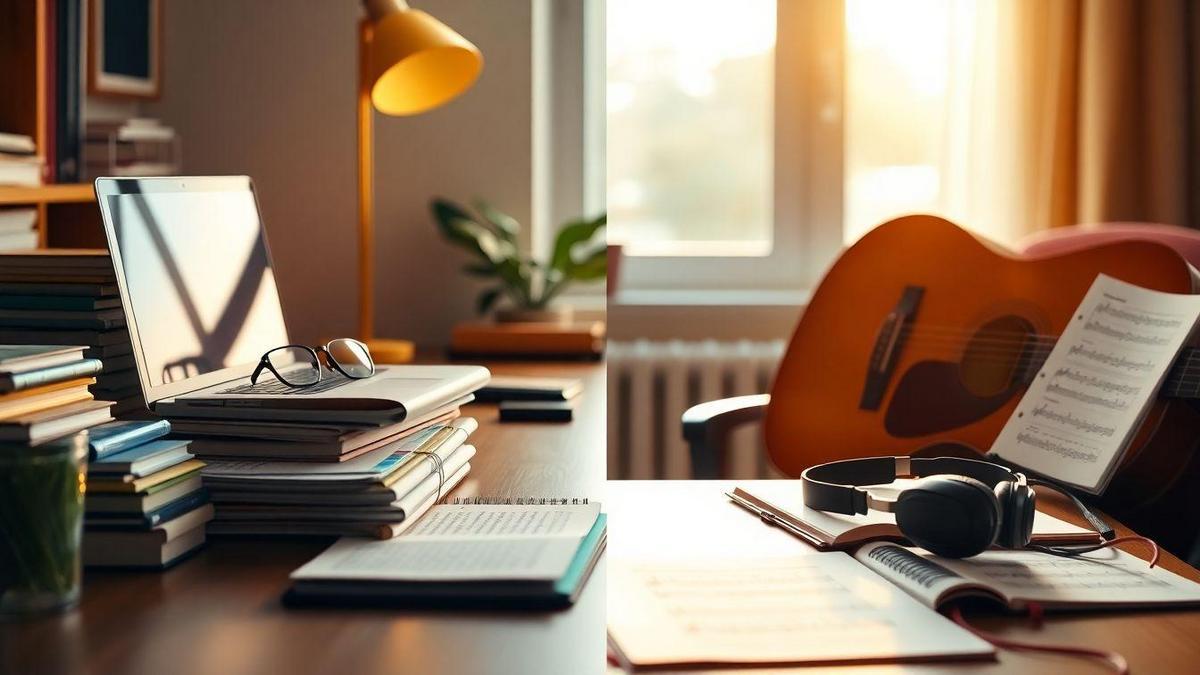How to balance music practice with school or work
I’ll walk you through a simple, repeatable plan I use to balance music practice with school or work. I map classes, homework, lessons, rehearsals, and practice in a weekly planner, break practice into short focused sessions, set one clear daily goal, and log what works. I book lessons around heavy study times, mix fun pieces with technical work to stay motivated, keep a quick warm‑up routine, and tell teachers or family when I need help. For a compact daily routine you can start today, see this simple practice routine guide.
Key takeaways
- Plan a weekly schedule for school, work, and music.
- Split practice into short, focused sessions (20–30 minutes) — the power of just twenty minutes daily is surprisingly effective.
- Finish urgent homework first so practice is distraction‑free.
- Set one clear goal per session and log progress.
- Protect sleep, breaks, and rest to learn and stay healthy.
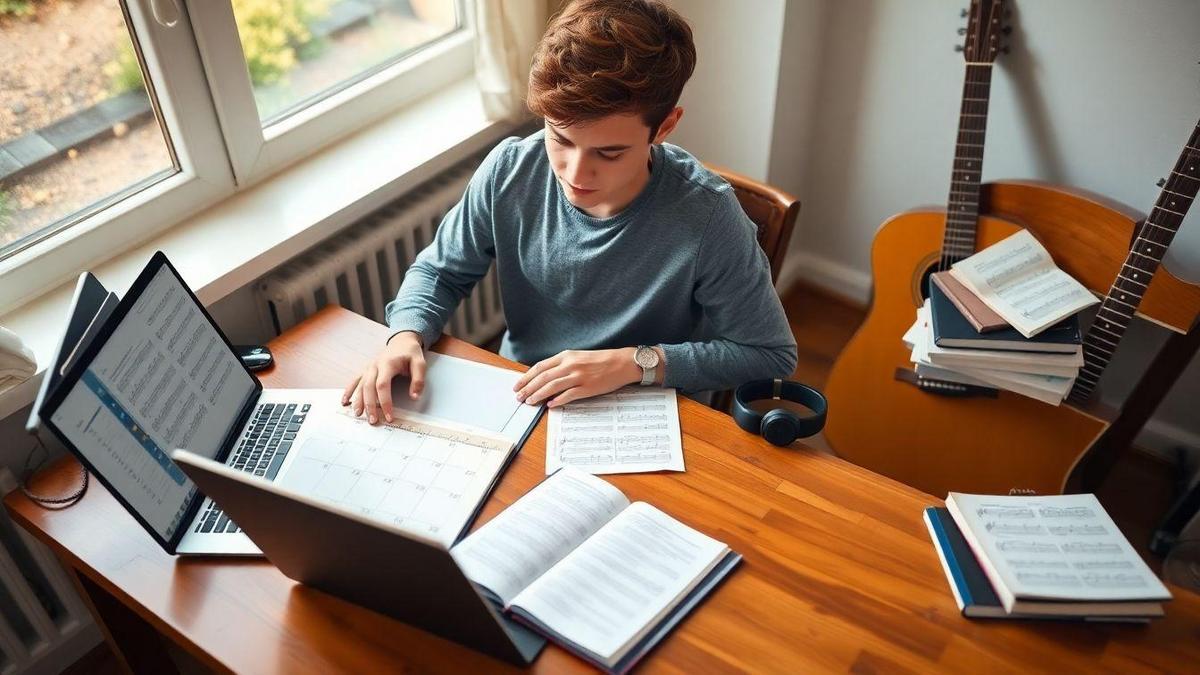
How I use a weekly planner to balance music practice with school or work
I treat my planner like a roadmap. It shows where I need to be for classes, shifts, rehearsals, and practice. When life gets busy, a visible weekly view keeps me calm and focused and helps practice stay fun, not a chore — especially useful if you’re learning music with limited time (tips for busy learners). For formal guidance on blocking commitments and weekly schedules, see Weekly planner and time management tips.
Map out fixed commitments, homework windows, and practice blocks
- Block fixed commitments first: classes, work shifts, meetings.
- Add homework windows and keep them visible.
- Fit short practice blocks around those windows—consistency beats marathon sessions.
- Color‑code or label blocks to see balance at a glance.
- Example: Monday — class 9–11, homework 3–4, practice 5–5:30.
If procrastination is a problem, pair your planner with strategies from how to stop procrastinating on practice so appointments stay real.
Set realistic daily targets that match energy
- Ask: Am I fresh, tired, or drained today? Pick a target that fits.
- Fresh: learn a new passage or 30–45 minutes of practice.
- Tired: repeat warmups or 10–20 minutes of focused technique.
- Rushed: one clear goal—sight‑read one page or polish one phrase.
- Write one specific goal each day (e.g., master bars 8–16).
For guidance on how much time to aim for, see how much time per day for music.
Weekly check‑in (15–30 minutes on Sunday)
- Review what worked and what fizzled; move or split sessions if needed.
- Add one fun goal for next week.
- Update colors and targets so Monday looks simple and doable.
Keeping a short log or journal makes weekly check‑ins faster — read about keeping a practice journal.

Short, focused sessions: the core of how to balance music practice with school or work
Short sessions fit a busy day like puzzle pieces and prevent practice from feeling like a marathon. If you have only small pockets of time, this approach is ideal — see the benefits in the twenty‑minute approach and the Principles of deliberate focused practice.
Practice in 20–30 minute blocks with short breaks
- Work in 20–30 minute blocks, then take a 5–10 minute break.
- Pick times when you’re awake and not rushed; set a timer.
- Repeat only if you still have focus and energy.
Target one skill per session
- Name the skill before you start (e.g., left‑hand pattern).
- Break it into 2–4 tiny steps.
- End the block with a quick run‑through to test the step.
Log each session
- Note date, length (20 min or 30 min), the skill, and one sentence about the result.
- Add one action for next time (e.g., use metronome at 60 bpm).
- Review the log weekly and copy wins into the plan.
If you want practical tips on turning mistakes into progress, check turning mistakes into learning opportunities, and for metronome use see how to use a metronome without losing patience.
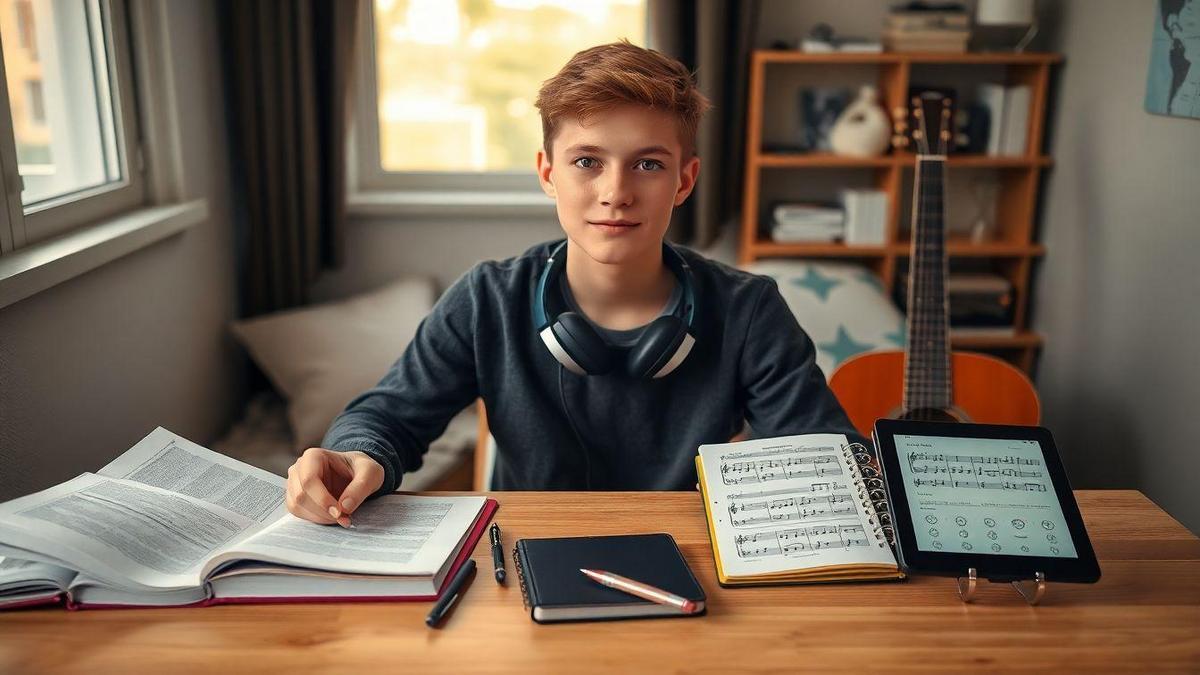
Prioritize with deadlines and small weekly goals
When I ask myself How to balance music practice with school or work, I start with clear goals and ranked deadlines.
List deadlines and performances to rank tasks
- Put concerts, tests, and homework due dates on one page.
- Mark urgency: A = must do, B = should do, C = nice to do.
- Note estimated practice or study time for each item.
- Example: Treat recitals as A items after a missed‑prep lesson taught me that lesson.
If progress feels slow, read staying motivated when progress feels slow for realistic perspective.
Set small weekly goals that fit your homework load
- Choose 3–5 practice goals for the week and match practice time to homework.
- Break goals into 15–30 minute chunks.
- Example plan:
- Warm‑up: 15 minutes daily
- New piece: 3 × 20‑minute sessions
- Technique: 2 × 15‑minute drills
- Sight‑read: 10 minutes Friday
- Adjust when exams pop up: shrink sessions, prioritize essentials.
Consistency matters more than raw talent — a short primer is here: why consistency always beats raw talent.
Daily review (5 minutes)
- Tick off what you did, move unfinished items to tomorrow, note one small win, and be honest about energy for tomorrow.
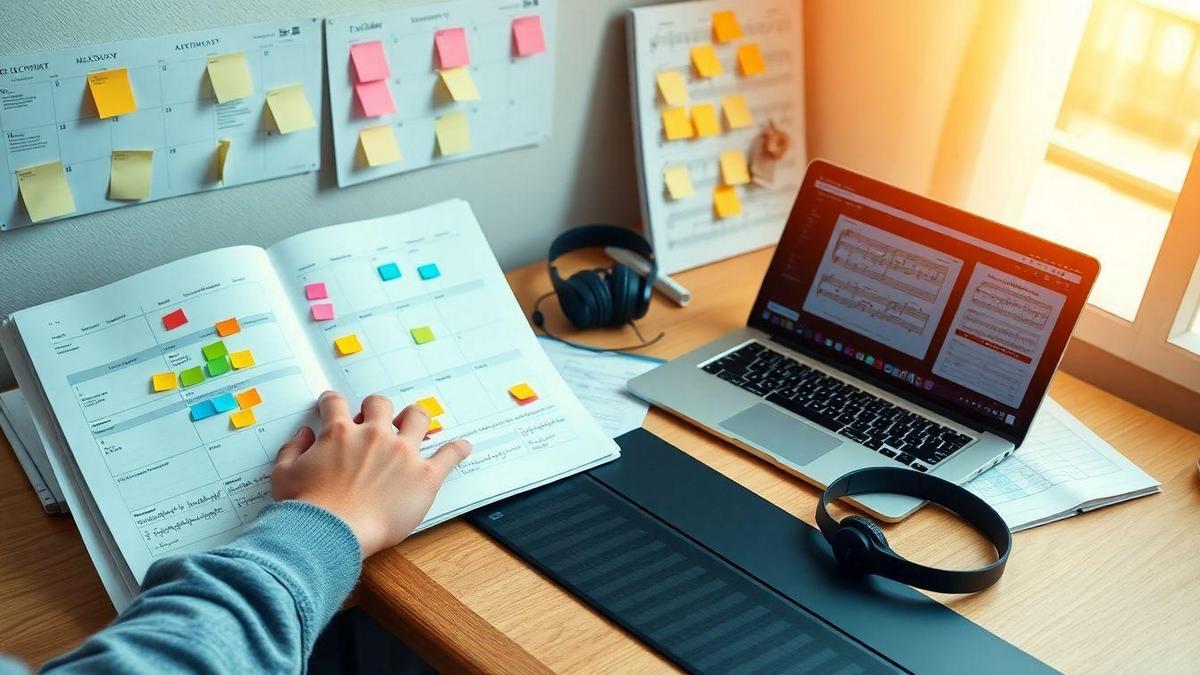
Align lessons and rehearsals with academic life
Treat lessons and rehearsals like class—non‑optional parts of your week—and plan them around peak study times.
Book lessons around your toughest study times
- Protect heavy study blocks first, then place lessons in gaps.
- Prefer consistent lesson days/times so the habit forms.
- Example: move a lesson away from a big paper deadline to reduce stress.
If you need ideas for scheduling around limited free time, see learning music with little free time.
Prepare lesson material that matches school projects
- Scan upcoming projects and pick lesson goals that help (e.g., rhythm for a presentation).
- Tell your teacher what’s coming so lessons are practical and connected.
Confirm lesson times in a shared calendar
- Add lessons immediately, set reminders (one day and one hour before), and list materials and the one‑line goal in the event.
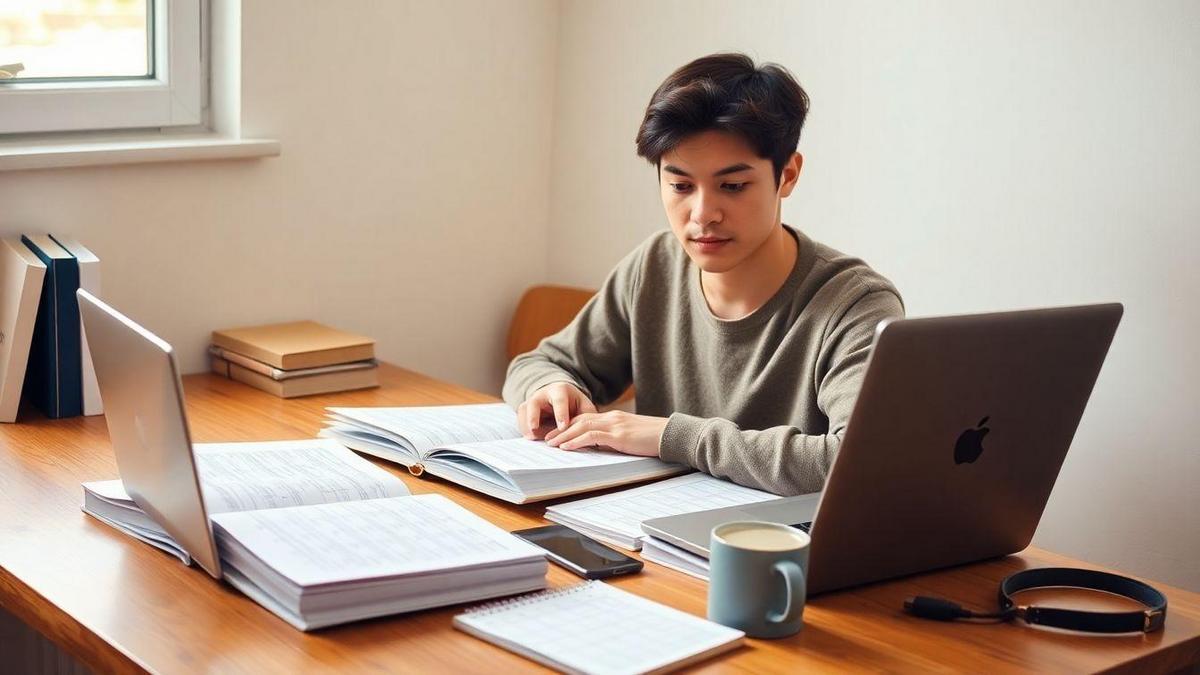
Rehearsals and busy weeks: practical rules for balance
If you’ve wondered how to balance music practice with school or work during heavy weeks, use these habits.
Treat rehearsals as study time
- Block rehearsals on your calendar and label them study.
- Set a short pre‑rehearsal ritual and a single rehearsal goal.
Playing with others is a powerful motivator and skill builder — read about the joy of playing with other people.
Shorten practice sessions when workload spikes
- Switch to 10–20 minute focused sprints instead of long runs.
- Pick the most important 1–2 pieces/techniques and focus there.
- Keep a 5‑minute cooldown to stay connected to the music.
For sprint strategies, revisit the twenty‑minute approach.
Be honest with conductors and teachers early
- Tell them as soon as you see a clash and offer solutions: swapping parts, recording, or rescheduling.
- Early notice increases options and preserves trust.
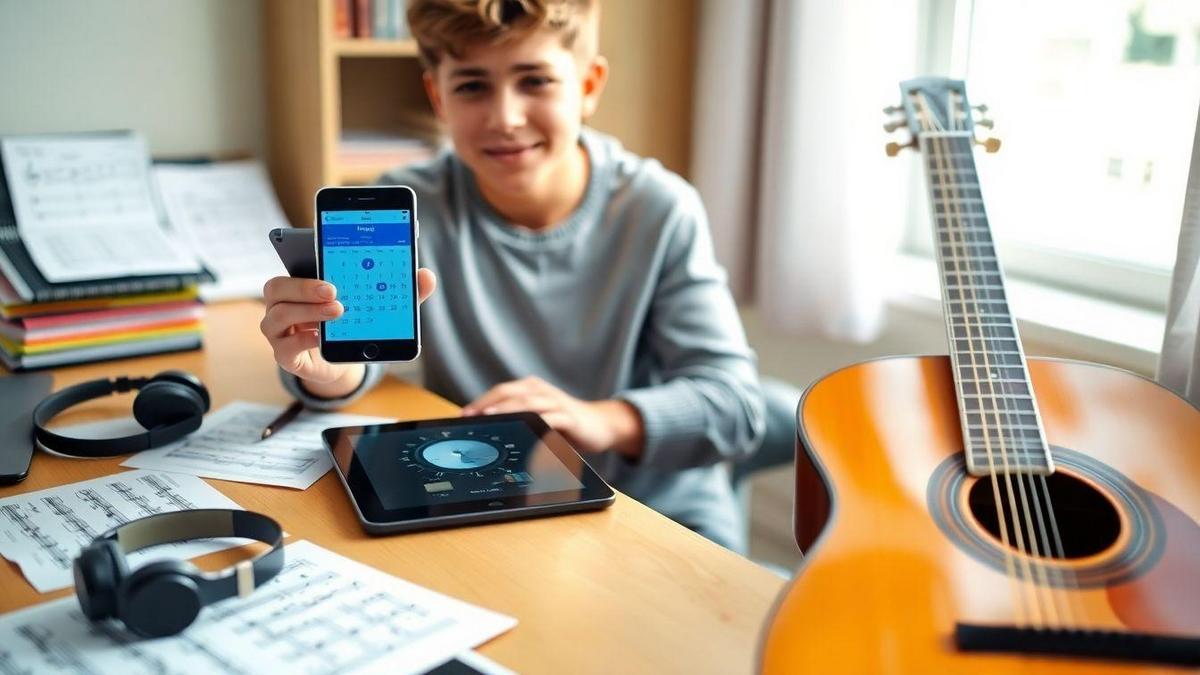
Use apps and calendars to see the whole picture
Putting everything in one calendar stops double‑booking and reveals pockets of time you can use.
Sync school and practice schedules in one app
- Keep all events in one place: classes (blue), practice (green), rehearsals (red).
- Add travel time, warm‑ups, and breaks.
- Create repeating events for classes and lessons, and block fixed practice slots.
If you need a quick inexpensive space to practice, consider setting up a home practice corner on a budget.
Use timers and reminders
- Try Pomodoro: 25 min work / 5 min rest; or 20–30 min practice / 5–10 min break.
- Set a 10‑minute prep reminder so you arrive ready.
- Start with a 5–10 minute warm‑up, one focused task, a short break, then a run‑through.
Create a short pre‑practice ritual to enter focus quickly — see rituals that help you enter practice mode.
Review weekly app reports
- Watch total practice minutes, number of sessions, and missed events.
- Ask: Am I overworking one piece? Skipping warm‑ups? Rebalance next week accordingly.
If tracking helps you learn faster, also consider keeping a short practice journal.
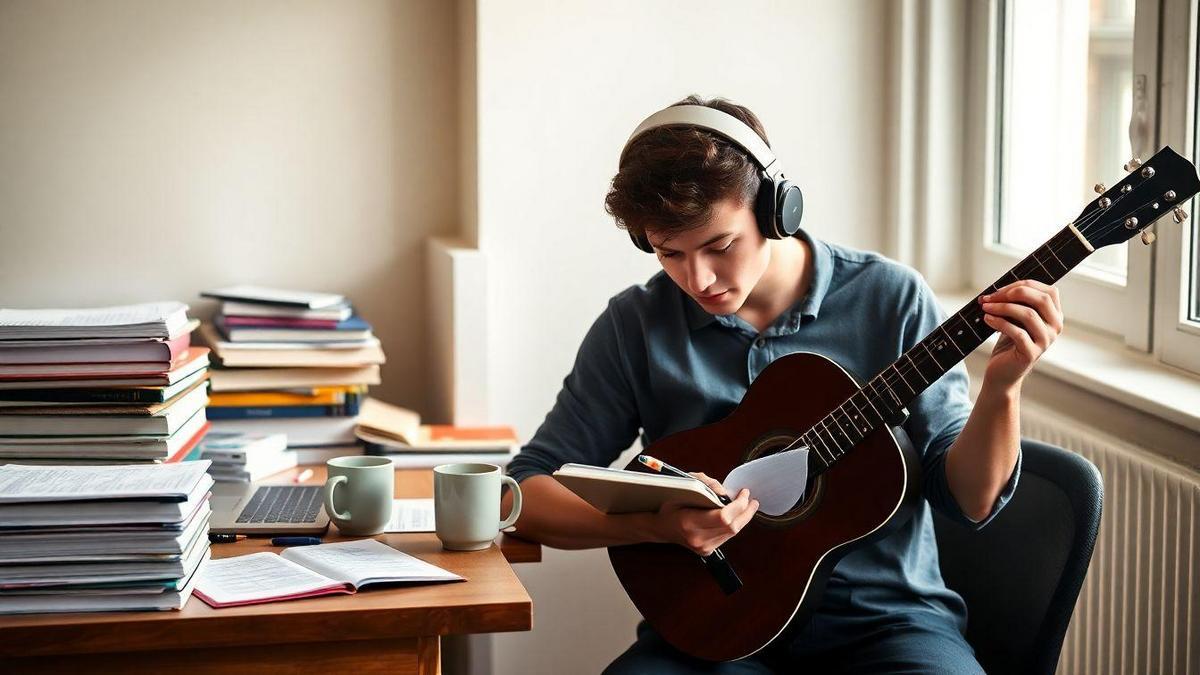
Stay motivated while you balance music practice with school or work
I mix joy and discipline so practice feels rewarding even on busy days.
Mix fun pieces with technical work
- Spend 10 minutes on a favorite song, 15 minutes on a focused technique, then 5 minutes of free playing.
- Pick a song slightly below your level so it’s achievable and fun.
For ideas on making practice enjoyable, read making practice fun instead of a chore and strategies for staying motivated when progress feels slow.
Use small rewards and scheduled rest
- After each 20–30 minute block, take a small reward (snack, stretch).
- Schedule at least one no‑music evening and low‑effort hobbies to avoid burnout.
- No practice in the last hour before bed; track energy as well as time. See Recommended sleep amounts for students.
If starting feels hard, see tips for overcoming the fear of starting music.

Build a simple routine so practice becomes automatic
Make a short, repeatable checklist you can do without thinking. The approach in a simple daily routine works well for busy schedules.
Quick warm‑ups (3–7 minutes)
- Five simple scales or one rhythmic groove to wake the brain and hands.
Rituals and short warmups are covered in rituals that help you enter practice mode.
Combine technique and repertoire
- Split a short session: 50% technique, 50% song work, or 10/10/5 if you only have 25 minutes.
For clarity on the difference between practicing and playing, see playing vs practicing: made easy.
Daily checklist (example: two‑step and a treat)
- Warm‑up (3–5 min)
- Technique/problem spot (7–10 min)
- Play‑through or fun piece (5–10 min)
- Quick note: one thing to fix tomorrow
Tape the checklist to the instrument case or keep it visible to reduce friction.
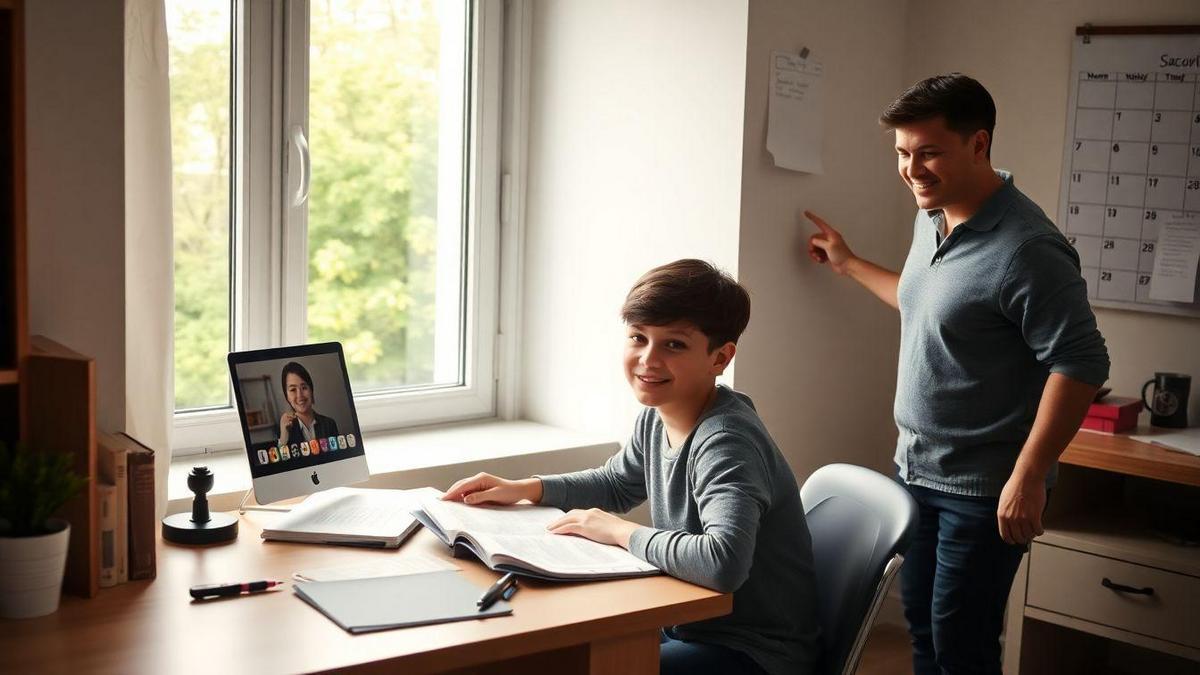
Communicate early and clearly
When you learn how to balance music practice with school or work, communication is a multiplier: early, honest plans open options.
Ask teachers for flexibility when needed
- State the conflict in one sentence, offer a realistic new deadline, explain how you’ll use the time, and thank them.
- Offer compromises: meet after class, submit early parts, or do a quick check‑in. For practical guidance, see How to communicate scheduling needs clearly.
- Offer compromises: meet after class, submit early parts, or do a quick check‑in.
Share your schedule with family
- Post a weekly schedule with study, practice, and rest blocks.
- Ask for specific help: fewer chores, meals, rides.
- Small swaps (e.g., a sibling handles dinner twice a week) can free focused practice time.
Set shared goals each term
- Agree on 2–3 goals: academic, musical, wellbeing.
- Set brief check‑ins and note adjustments or rewards if things slip.
If you’re juggling big decisions about music and life, the piece on should music be your hobby or career can help frame priorities.
Conclusion
Balancing music practice with school or work isn’t magic—it’s a set of small, steady choices. Use a weekly planner, block real time in one calendar app, protect short focused sessions, aim for one clear goal per block, log progress, and tweak the plan weekly. When life gets busy, shrink sessions, align lessons with deadlines, and treat rehearsals like class. Mix fun pieces with drills, protect rest, and communicate early with teachers and family. Little habits repeated beat big bursts — and consistency always beats raw talent. For more practical, no‑nonsense tips, visit https://clickneutro.com.
Frequently Asked Questions
Q: How can I fit daily practice around homework?
A: Make a tiny plan: one 20–30 minute slot after homework, one clear goal, a timer, and no distractions. The twenty‑minute method is useful here.
Q: How to balance music practice with school or work?
A: Block your week, protect practice like an appointment, stay flexible, and use short focused sessions that match your energy. If time is very limited, read tips for learning with little free time.
Q: What if I get burned out from both?
A: Rest a day, play easy fun songs, cut sessions to 10 minutes, and ask a teacher or friend for support. For mental reset ideas, see how to break creative blocks in music.
